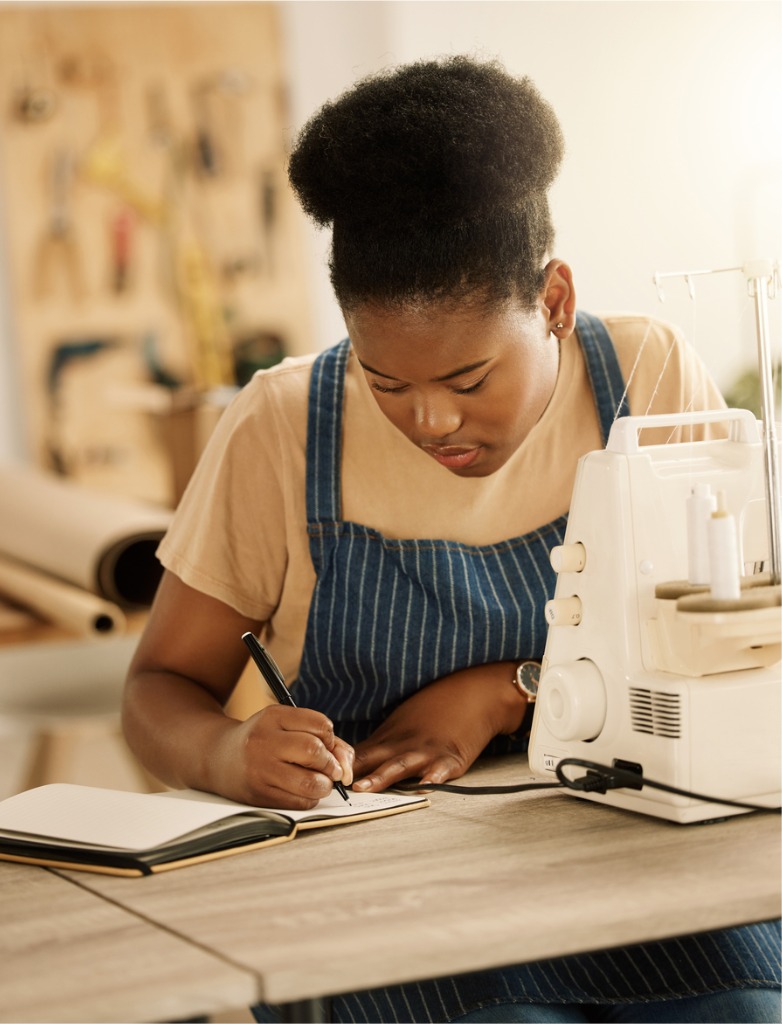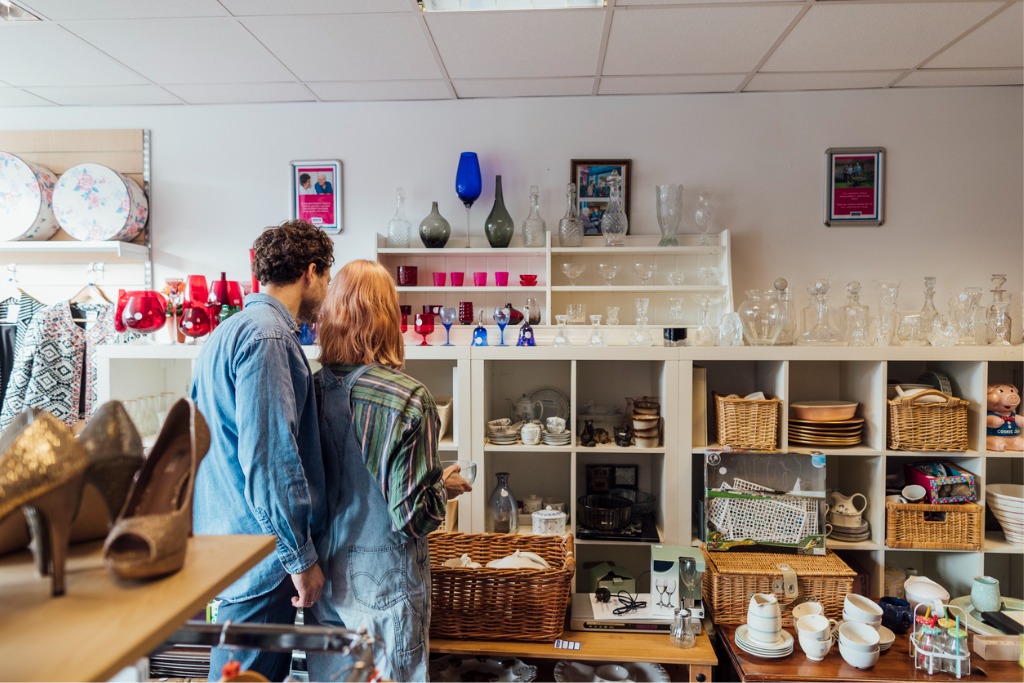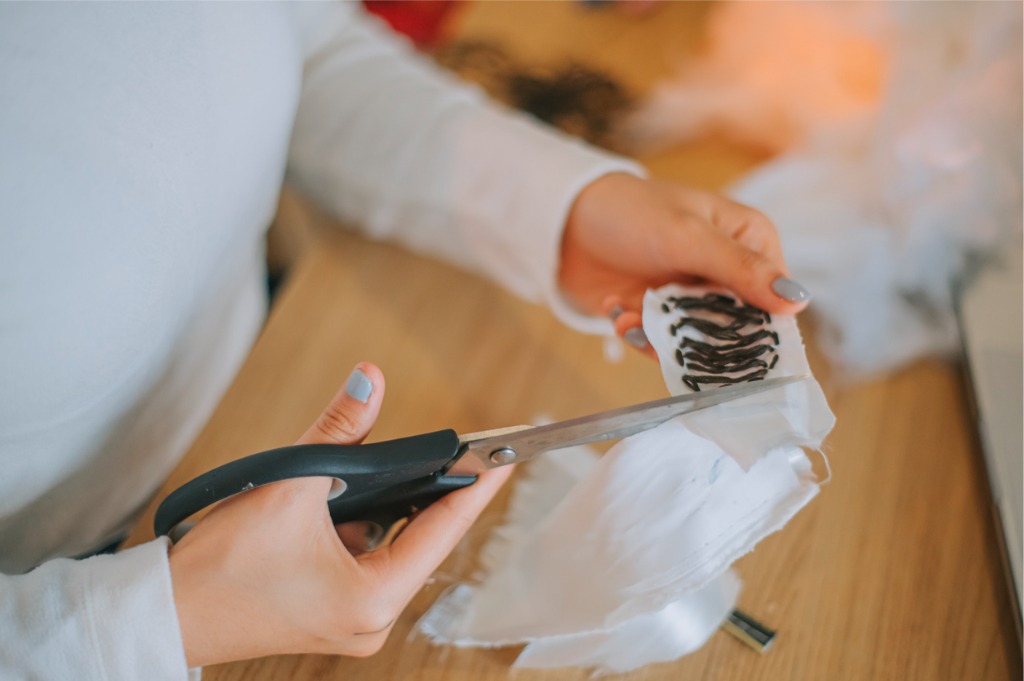
Photo by Charday Penn via iStock
Thrift shops are a great way to save money and be creative with the things you buy. Unfortunately, people who don’t like it simply don’t know how to thrift supplies for DIY projects.
Rajiv Surendra from HGTV Handmade shows us the joy of thrift shopping in the video below:
We can learn three things from Rajiv’s essential tips for thrift shopping. First, before you start, make a mental note of what you want to get.
Second, scan every single part of the store until you’ve located what you’re looking for (or at least something similar). Third, if you buy something, make sure it’s in perfect condition.
Sounds simple, right? That is because successful thrifting does not require black magic. And if you’re new to the world of thrifting, here are several ways to get started.
Table of Contents:
- Tip 1: Have a Concept Design
- Tip 2: Budgeting Is Important
- Tip 3: Scan Every Single Part of the Store
- Tip 4: Be Prepared
- Tip 5: Don’t Be Afraid to Negotiate Prices
- Tip 6: Get Familiar With the Inventory
- Tip 7: Don’t overthink things, but do be selective
- Thrift Store Shopping FAQ
- Conclusion
Tip 1: Have a Concept Design for Your DIY Projects

Photo by PeopleImages via iStock
Before you go thrifting, have an idea of what you want to create, or you’ll just buy junk that doesn’t work. For example, are you looking for craft supplies or school supplies? Are you eyeing a condiment tray or above-the-wall bed décor?
Before beginning a project, you don’t have to fully understand it. Just have some general ideas so that you won’t waste time on stuff that isn’t useful.
So before you head out, think about your project and brainstorm what you’d like to use. This will enable you to focus your search and save time.
Tip 2: Budgeting is Important for DIY Projects
If you’re planning on doing any DIY project, budgeting is essential. It helps you plan ahead and saves you money. You wanna make sure you get everything you need for affordable prices.
You should also set aside enough money for all the materials you need. Don’t forget to include shipping costs, too (if required).
Tip 3: Scan Every Single Part of the Store

Photo by SolStock via iStock
You got to have patience when it comes to thrift shopping. First, look at all the items available. Then, when something catches your eye, ask yourself these questions:
- Does this item fit my needs?
- How much would this cost me?
- Is this item in good condition?
- Would I pay the total price for the new-and-improved item?
If “yes” is your response to the four questions, then you’re good to go for your DIY projects. If not, move on to another item.
Tip 4: Be Prepared
Thrifting is full of surprises. You may stumble upon a beautiful statement piece, or you could spend hours searching for nothing. Either way, being prepared is critical.
Be sure to bring everything you need. For example, get a tape measure. Also, note where you found each item so you can return them quickly.
Tip 5: Don’t Be Afraid to Negotiate Prices for Items to Use for DIY Projects
Negotiating can lead to some of the best deals. When you see something you like, ask the seller if they’ll sell it to you for less than its original price. We are doing secondhand shopping, after all.
They may say no, but sometimes they’ll agree to give you a discount. And even if they don’t, you still got a deal.
Tip 6: Get Familiar With the Inventory
It’s possible to find products in a thrift store that aren’t typically available. Knowing which store sells a specific item is vital if you’re seeking one. Search for it online or ask around. Once you’ve found the store that sells it, check out the inventory. This way, you’ll know what exactly you’re getting into.
Tip 7: Don’t Overthink Things, but Do Be Selective

Photo by AnnekeDeblok vis iStock
Don’t be afraid to take risks. If you find something that inspires you, and the price is low enough, buy it. If you feel less enthusiastic about it in a couple of months, simply donate it.
For example, broken glass is something you can easily find in thrift shops. They might not look like much now, but you can repurpose them into anything from vases to candle holders.
In addition, you can find some inspiration from our list of crafts to make from upcycling broken glass.
Thrift Store Shopping for DIY Projects FAQ
Here are some questions answered about thrift stores.
What day of the week is ideal for thrift store shopping?
Mondays and Tuesdays are great days to go thrifting because people tend to be busy working, so there aren’t many crowds.
Spring cleaning happens during March, so you might want to make sure you clean up your home before heading to the store. This could mean decluttering your closet and removing old items you no longer wear.
Thrift stores often have big events like Black Friday and clearance sales. In addition, some stores offer discounts throughout the entire week, while others just run one sale per month or week.
What should you avoid purchasing from thrift shops?
Thrift stores offer some of the most exciting and satisfying shopping experiences around. But it can also lead to some costly mistakes. Here are five things you shouldn’t do while shopping at thrift stores.
Furniture with Strong Odors
Avoid furniture with strong scents like perfume, cologne, hairspray, lotion, etc. These smells could attract pests such as fleas, moths, ants, roaches, mice, rats, termites, bedbugs, cockroaches, spiders, and mosquitoes.
Old Paint
Old paint can contain harmful chemicals that can leach into the wood causing damage over time. If you see cracks or peeling paint, you should pass on it.
Used Bed Linens
Used bed linen can harbor bacteria and dust mites, making it unsafe to sleep on. Also, don’t buy used pillowcases because they can become stained quickly.
What are the common thrift store items for DIY projects?

Photo by Edwin Tan via iStock
Here are some of the most popular items you can find at thrift stores for your DIY projects:
- Old jewelry boxes
- Vintage kitchenware like ceramics
- Household goods
- Tools
- Office supplies
- Craft materials
- Home Décor
- Vintage clothing or fabrics
There are plenty of ways to use fabric scraps. For instance, you can sew clothes using vintage patterns or create unique craft projects. You can also turn fabric scraps into rugs, pillows, curtains, wall hangings, and more. Read our guide for some cool ways to use fabric scraps.
Conclusion
In conclusion, thrifting is a fun hobby that can save you money and give you unique items to get creative with. Whether you’re looking for new curtains, a lampshade, or even a new couch, thrifting is a great place to find cheap materials to work with.
So next time you head to the thrift store, remember these tips for your DIY projects.
Learn More: